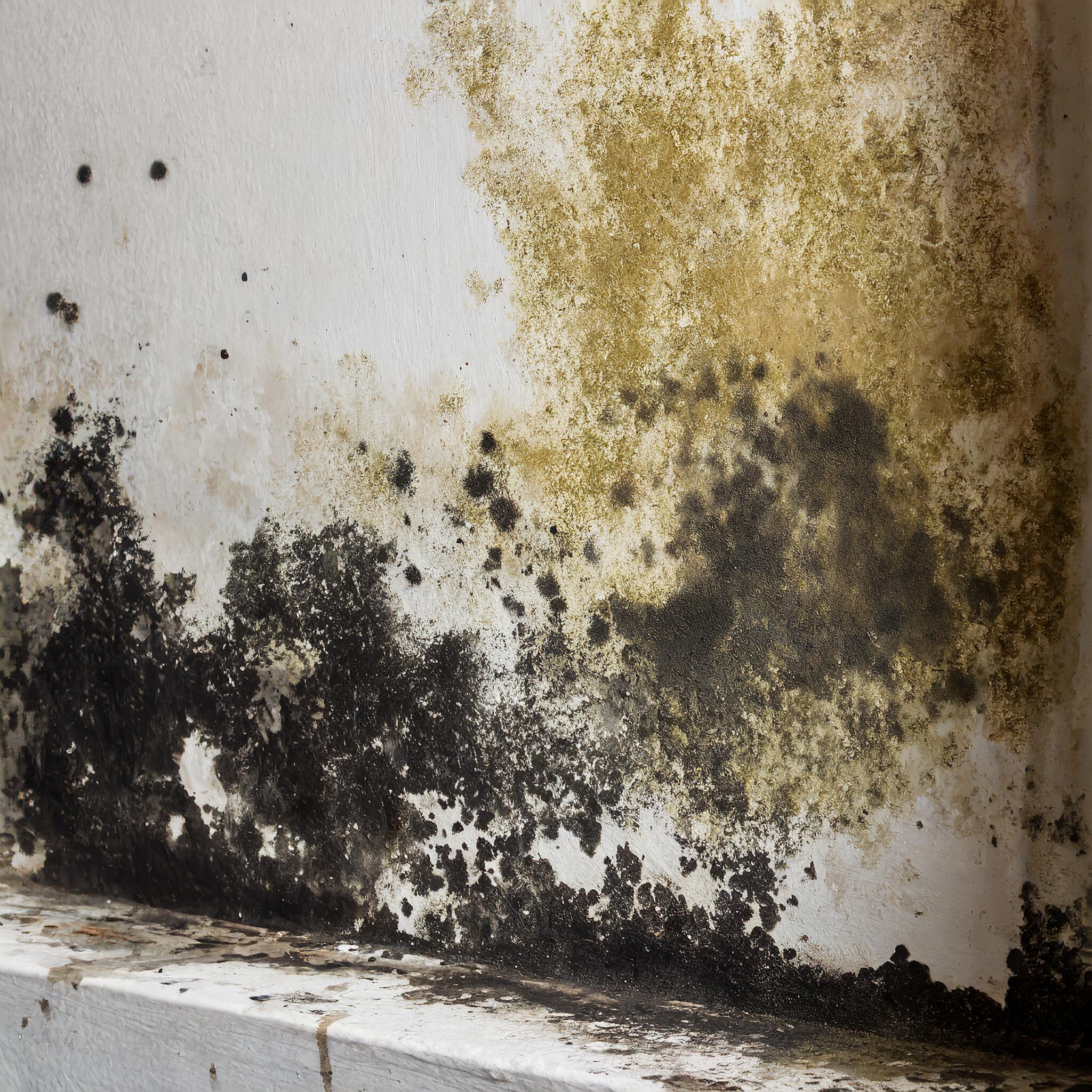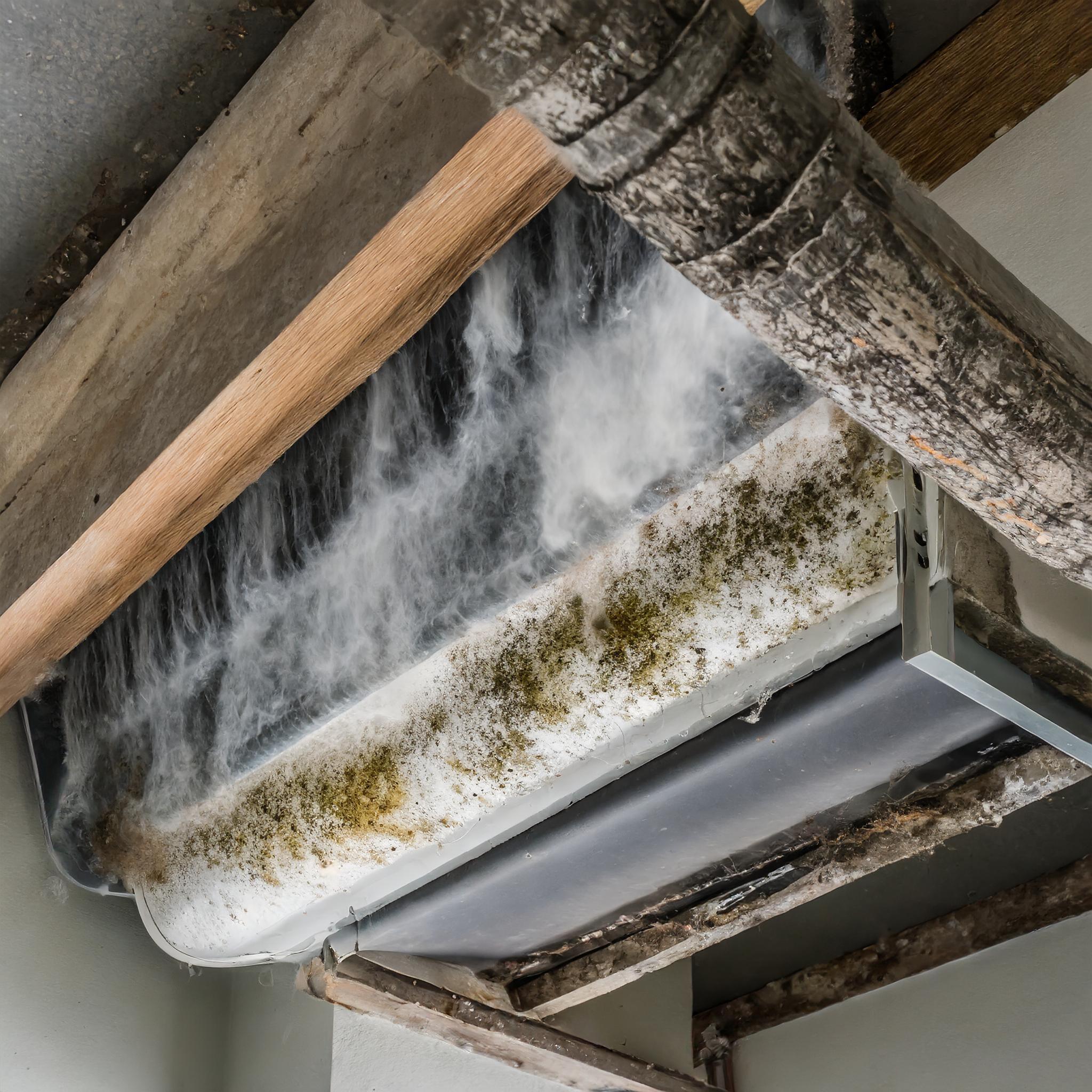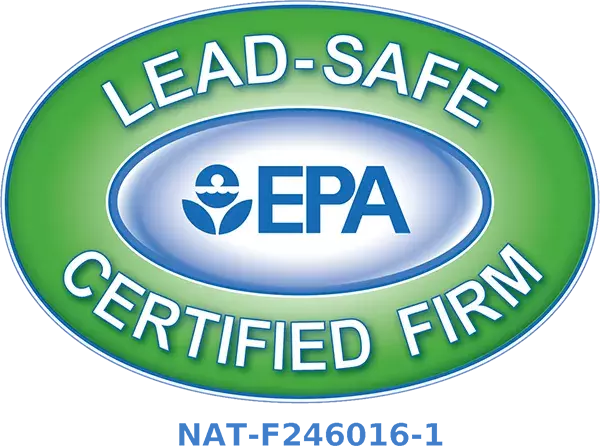Mold lurking in your air ducts isn’t just a nuisance; it’s a potential health hazard that can spread unseen throughout your home. When you discover mold in these hidden passages, swift and decisive action is needed to protect the quality of the air you breathe every day.
In this blog post, we’re diving into what steps should be taken when faced with this sneaky intruder. It’s not enough to simply clean up what’s visible—understanding why mold has appeared and how to prevent its return is essential for ensuring long-term indoor air quality.
From recognizing early signs of trouble to choosing the right professionals for mold remediation, we’ll provide all the information necessary for dealing with mold contamination effectively.
Join us as we explore how best to confront and resolve one of homeownership’s more challenging problems: combating mold growth within your HVAC system—and making sure it stays gone!
Table of Contents
- Recognizing Signs of Mold in Air Ducts
- Health Implications Associated with Moldy Air Ducts
- Immediate Actions Upon Discovering Mold
- Professional Assessment and Remediation
- Preventative Measures After Removal
Recognizing Signs of Mold in Air Ducts
Recognizing signs of mold in your air ducts is crucial for maintaining a healthy living environment. Be on the lookout for visible mold growth inside or around your HVAC system’s vents—this can appear as irregular spots or streaks, with colors ranging from black to greenish-white. Besides these visual cues, a musty odor when the heating or cooling system runs is often a telltale sign that mold might be present within the ductwork.
Additionally, if you find yourself suddenly suffering from unexplained allergies or respiratory issues while indoors, this could indicate airborne spores emanating from hidden colonies of mold in your air ducts—a signal that should not be ignored and warrants further inspection.
Health Implications Associated with Moldy Air Ducts
- Respiratory Issues: Exposure to mold spores can lead to coughing, wheezing, and difficulties in breathing, especially for those with asthma or other respiratory conditions.
- Allergic Reactions: Mold often triggers allergic responses such as sneezing, runny nose, red eyes, and skin rash. Prolonged exposure may intensify these symptoms over time.
- Immune System Impact: Individuals with compromised immune systems are at a higher risk of fungal infections when exposed to moldy environments.
- Long-Term Health Effects: Over time, continuous exposure to mold from air ducts can potentially contribute to more severe health issues like chronic sinusitis or lung inflammation.
Understanding the potential health risks associated with having mold in your air ducts underlines the importance of addressing this problem promptly and thoroughly.
Immediate Actions Upon Discovering Mold
Stop Using Your HVAC System
Upon discovering mold in your air ducts, the immediate course of action should be to stop using your HVAC system. This might seem inconvenient but continuing to run it can exacerbate the problem by spreading mold spores throughout your home. Mold thrives on moisture and warmth—conditions that heating and cooling systems can circulate with ease. By halting its operation, you’re effectively minimizing the further distribution of spores and containing the issue while preparations for removal are made.
Document the Evidence
Documenting evidence is just as critical once you’ve discovered mold in your air ducts. Start by taking clear photos or videos of any visible mold growth around vents or inside ductwork if safely accessible; this includes capturing different angles and areas affected by mold infestation.
These images will serve multiple purposes: they’ll help professionals assess the severity of the situation remotely, guide them during remediation, and act as a record for insurance claims or discussions with landlords about maintenance responsibilities. Proper documentation ensures that all parties have a transparent understanding of what’s at stake when tackling this environmental hazard within an indoor space.
Professional Assessment and Remediation
When mold is detected in your air ducts, a professional assessment becomes essential. Remediation isn’t just about cleaning—it’s also about identifying the underlying causes of mold growth to prevent future issues. Services like those we provide at J&R Restoration specialize in not only removing existing infestations but also providing thorough inspections to uncover moisture sources that contribute to the problem.
Choosing A Qualified Service Provider
Choosing a qualified service provider means looking for companies with certified technicians who are trained specifically in HVAC systems and mold remediation. Check for credentials such as NADCA (National Air Duct Cleaners Association) certification, which indicates adherence to strict industry standards. Providers like J&R Restoration typically offer comprehensive assessments before beginning any work, ensuring they have a full understanding of what’s required for effective remediation.
Understanding the Remediation Process
- Inspection: A detailed examination of your HVAC system will be conducted by specialists from J&R Restoration.
- Containment: To prevent cross-contamination, affected areas will be sealed off during cleanup.
- Filtration: High-efficiency air scrubbers and vacuums help capture microscopic mold spores out of the air.
- Removal & Cleaning: Infected materials may need removal or deep cleaning depending on contamination levels.
- Repair & Replacement: Any damaged components or sections contributing to moisture buildup must be repaired or replaced accordingly.
- Final Testing: Post-remediation testing ensures all traces of molds are eradicated and indoor air quality is restored.
It’s crucial you engage with experienced professionals who don’t cut corners when it comes to health-related hazards—at J&R Restoration we understand this importance and work diligently towards restoring safe breathing environments within homes impacted by moldy ductwork conditions.

Preventative Measure After Removal
After the removal of mold from your air ducts, taking preventative measures is vital to ensure it doesn’t return.
Maintenance Checks
Consistent maintenance checks are one of the most effective strategies for prevention. Schedule regular HVAC inspections with a qualified technician who can spot early signs of moisture or mold buildup before they become significant problems. These professionals can also clean and replace air filters as needed, which plays an important role in maintaining indoor air quality.
Improving Ventilation Systems
Improving ventilation systems forms another crucial part of preventing future mold growth. Ensure that areas prone to high humidity, like kitchens and bathrooms, have exhaust fans installed and functioning correctly.
In some cases, investing in upgraded HVAC systems with built-in dehumidifiers might be beneficial—especially if you live in climates where dampness prevails year-round. Keeping humidity levels low within your home by using dehumidifiers helps reduce condensation that could otherwise accumulate inside ductwork.
Taking these steps seriously after remediation not only safeguards against new instances of mold but also contributes to a healthier living environment overall—an outcome well worth the effort!
Beyond mold remediation, at J&R Restoration we specialize in helping South Florida deal with water damage, fire damage, roof tarping, and even interior remodeling. Contact us for more details.


